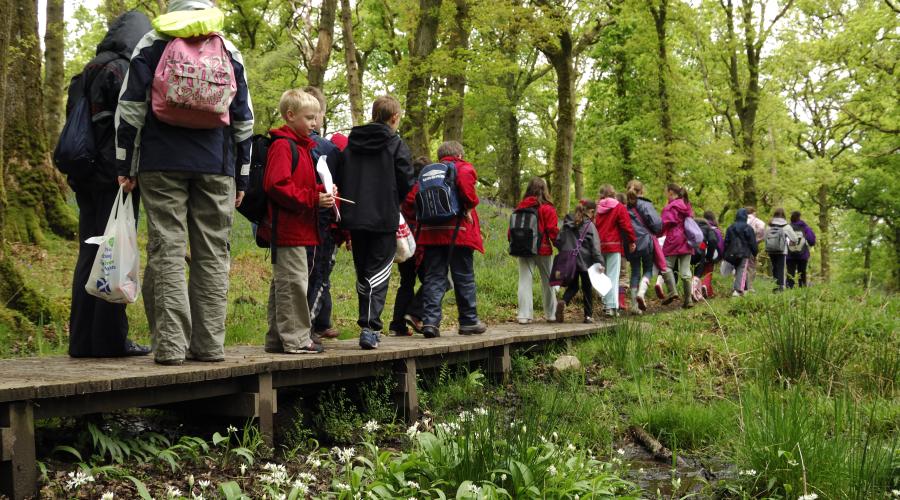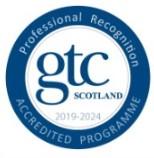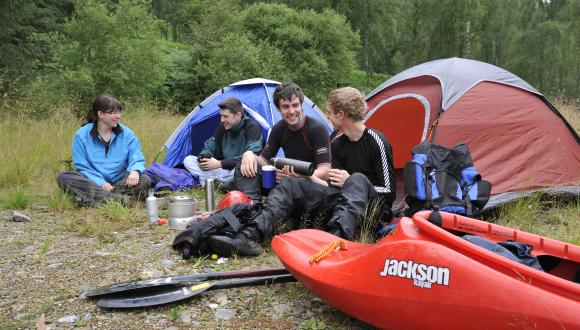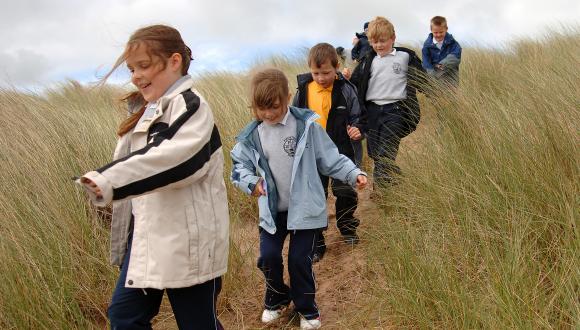
Teaching in Nature
Our Teaching in Nature programme supports groups of educators to work together to use a natural place to plan, implement and evaluate authentic and relevant outdoor learning experiences for their pupils. It combines collaborative, practical and online learning to support educators through the next stage in their outdoor learning professional development, pushing their boundaries and challenging their pupils. It matches experts on nature (site owners and managers) and experts on the curriculum (the educators), which benefits managers, educators and learners alike.

Teaching in Nature was accredited by the General Teaching Council for Scotland (GTCS) in 2014 (and reaccredited in 2019). This means that teachers who successfully complete the programme gain Professional Recognition in Outdoor Learning without having to apply separately to GTCS. The programme normally runs from for 12-18 months, starting in autumn. If we have places available, these will be advertised here.
Approximately 3500 learners and their teachers have directly benefited from our programme. A range of subjects have been addressed, including Technologies, Literacy, Sciences, Music, Maths and Social Subjects, many through interdisciplinary activities.
We contacted some participants one year after taking part.
-
80% of respondents had continued to take learning outdoors;
-
73% had supported a colleague to take learning outdoors;
-
87% said that they were more able to adapt plans according to things that happen on the day;
-
87% were more confident about championing outdoor learning, having seen the benefits for themselves;
-
More than half of respondents now plan for a wider range of curriculum areas outdoors;
-
90% said that their confidence in taking learning outdoors had increased.
Having seen the impact it can have, we would like more people to have the chance to benefit from the Teaching in Nature approach.
Guidance and case studies for educators
“I feel more confident in organising and taking pupils out to natural places for learning. It has allowed me to see the benefits in terms of learning but also the wider reaching benefits such as developing the pupils’ confidence and ability to work well together”
There are 3 key elements to a successful Teaching in Nature project:
- give teachers time (on site and to plan);
- get teachers together to collaborate;
- introduce teachers to the people who know and love a place.
You could:
- form a group of like-minded colleagues;
- find your place (See Finding your local greenspace)
- visit your place with colleagues and meet the site manager/land owner/others who know it well (See Accessing your local greenspace for tips and contacts);
- plan, deliver and evaluate regular sessions at and about your place at different times in the year (Using your local greenspace has ideas to get you started);
- integrate this with other indoor and outdoor class work;
- share challenges and successes and collaborate with your colleagues throughout;
- go with the flow - don’t over plan, take opportunities to learn more about the place from others, form partnerships and go off on tangents – sometimes the most successful outdoor learning doesn’t end up as first planned!
If colleagues need convinced, take a look at Why learn in local greenspace?
Be inspired by case studies featuring primary and secondary teachers.
“Teaching in Nature has made me realise that forward planning is a very constrained process. You can't really plan for things that you don't have knowledge of or can even imagine are possible. You are always going to plan for things that you have experienced yourself or seen others doing, which is somewhat limiting in nature. I'm much more confident about starting off on a journey with an initial idea and then being completely flexible, adaptable and open to the suggestions of others with talents that far surpass my own.”
Guidance and case studies for land owners and managers
“I was a little concerned that [the project] was seen as a replacement for the Rangers’ educational role, however I think it is more of an addition to what the site can be used for.”
There are 3 key elements to a successful Teaching in Nature project:
- give teachers time (on site and to plan);
- get teachers together to collaborate;
- introduce teachers to the people who know and love your place.
You could:
- offer a group of local teachers a guided tour of your site;
- during the tour, treat them like any other interest group and avoid demonstrating activities they might do with pupils or recommending activities for specific places;
- resist the temptation, at this point, to hand out your teachers’ packs (if available). It is easier for the educators to be creative and come up with bespoke, inspirational ideas for their pupils when they have a ‘blank canvas’;
- facilitate collaboration and sharing by offering a space for the group to begin planning how they will use the site with pupils;
- make it as straightforward as possible for teachers to come with their pupils – but don’t be tempted to help them too much. Teaching in Nature is a process that is most effective when participants learn things for themselves.
You may also like to:
- facilitate further collaboration and sharing by instigating an email, Facebook group, Glow group, or similar;
- encourage use of the online forum for sharing and collaboration by posing simple questions, sharing things that have happened on site, or highlighting relevant research, projects or resources;
- encourage teachers to keep you informed throughout their professional development journey. You may learn a lot from what the teachers are doing that you can build in to your own work with young people;
- consider offering a travel grant to support return visits with pupils, if possible. The biggest barrier to off-site outdoor learning is often cited as travel.
Be inspired by case studies featuring a range of sites and managers.
“Teaching in Nature allowed teachers access to and experience of the site without being a huge draw on our time - something that is desperately valuable during the busy summer months.”







